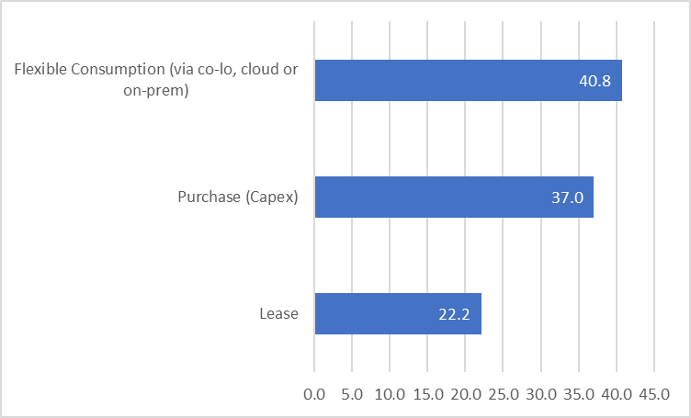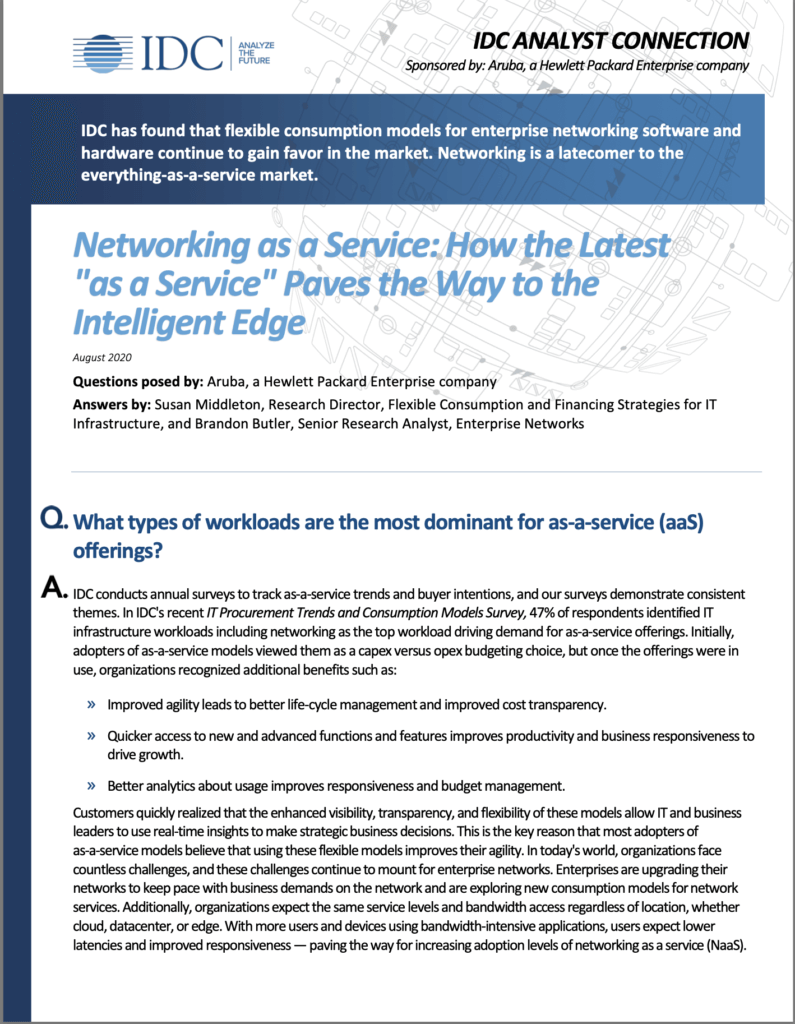By Brandon Butler, senior research analyst, enterprise networks, IDC and Susan Middleton, research director, flexible consumption and financing strategies for IT infrastructure
Influenced by the rapid and mainstream enterprise adoption of cloud services over the past decade, "as a Service" offerings have become increasingly commonplace in the IT industry. However, networking has lagged behind—until recently. Enterprise Network as a Service (NaaS) has emerged as an important new way for organizations to more flexibly consume network infrastructure, and enterprises are beginning to realize the significant benefits of this new model.
Traditional consumption of network equipment has typically been a one-time expenditure of hardware, software, licenses, and services that may or may not be packaged together. NaaS models allow enterprises to outsource the full lifecycle of an enterprise network deployment. NaaS offerings are inclusive of integrated hardware, software, licenses, and support services delivered in a flexible consumption or subscription-based offering.
NaaS models allow enterprises to outsource the planning deployment, day-to-day operational management, upgrades, monitoring and troubleshooting of an enterprise network, as well as decommissioning and end-of-life support of equipment. Through that process, organizations get access to the latest technology offered by the NaaS vendor, including new hardware components and software. Networks managed under a NaaS model are constantly monitored for performance and security, easing the management burden for enterprises. Upcycling and recycling of equipment help infrastructure components to be refreshed at a faster pace compared with traditional consumption models to keep up with innovation.
IDC survey data shows strong interest among enterprises in NaaS models. Figure 1 shows data of how enterprises plan to pay for IT and network infrastructure assets in their next procurement cycle. It shows that flexible consumption models are anticipated to surpass capex spending in the next procurement cycle.
Figure 1: Flex vs. capex vs. lease
How do you anticipate your organization will pay for its IT and network assets in the next procurement cycle?

Source: IDC/Aruba NaaS Survey; 2020. n=1010
Benefits of NaaS Models
Top benefits of as-a-service models like NaaS are flexibility, simplicity and transparency. The flexibility to scale both up and down, the simplicity of having all the required metrics on one-plane of glass and the transparency about pricing and system optimization are among the key benefits. NaaS enables advantages in other areas including:
- Planning and Deployment: NaaS models allow enterprises the outsource the full lifecycle of an enterprise network deployment, if they wish. That's inclusive of Day 0 site planning, Day 1 deployment, through Day N management and optimization, all the way to end of life and decommissioning of the equipment.
- Operational Benefits: Consuming networking equipment as a service enables significant operational benefits, including:
- Reduces IT staff workloads: NaaS allows staff to focus on business-enabling tasks rather than simply maintaining network up-time
- Optimized Performance: NaaS vendor uses streaming telemetry and ML/AI-powered management tools to assure peak network performance
- Going green: Secure and agile decommissioning, and eventual re-use of network equipment helps organizations reach sustainability goals
- Security: Security is a foundational concern for all organizations. NaaS models inherently have advanced management tooling as part of the offering, including for security. Advanced network management platforms provide detailed real-time analytics into network operations, enabling NaaS vendors to alert enterprises when unknown or nefarious traffic is on the network, and automatically remediate the issue. With this type of functionality built in, NaaS models enable enterprises to have an extra set of eyes on their network environments, protecting against security threats.
- Financial: Fundamentally, the reasons that organizations adopt as-a-service models like NaaS, is to align usage with budgets and improve financial decision making. Specifically, as-a-service models like NaaS provide better cost metrics and enhanced insights into all aspects of usage including power, capacity, bandwidth speeds and service levels, that enable IT and business leaders to make strategic decisions about workloads and pending projects.
Enterprise networks today are dynamic, which is driving interest in more flexible models for consuming enterprise networking equipment. IDC believes enterprise use of NaaS models will increase significantly in the coming years as more organizations realize the benefits these flexible consumption models enable for modern enterprise networking.





